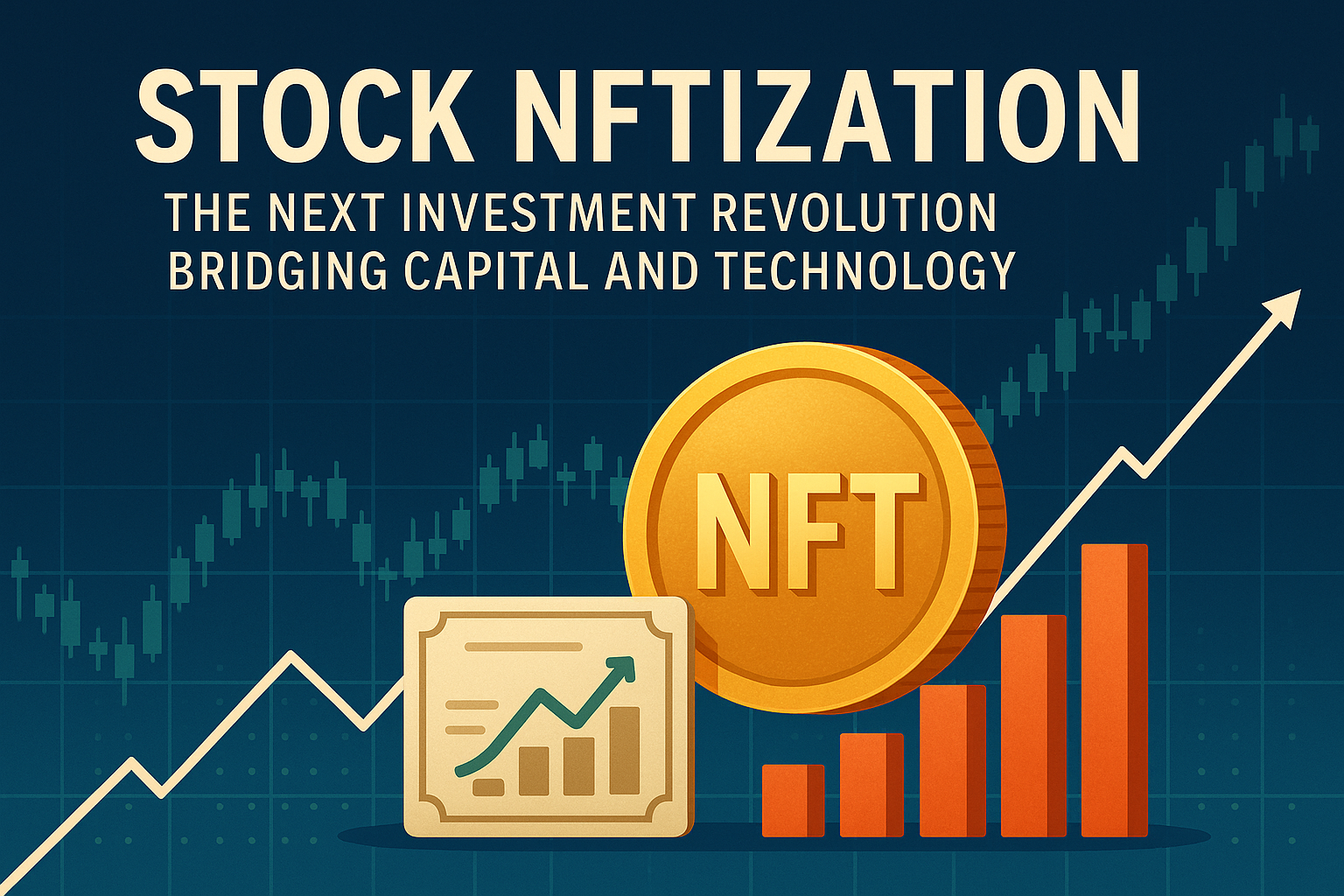

For decades, every leap forward in financial markets has been catalyzed by technology. From electronic trading and quantitative strategies to the rise of decentralized finance (DeFi), innovation continues to reshape how capital flows. Today, a new intersection is emerging—stock NFTization, a concept sitting at the crossroads of financial assets and on-chain technology, and it may redefine the next era of investment models.
While traditional stocks are digitally registered, their composability, visibility, and portability remain constrained. NFTs, as unique and verifiable digital assets, give equity a new form of tradability. Investors are no longer just names in a brokerage ledger—they can now own tangible, displayable tokens representing real equity, transferable on global decentralized networks. This evolution not only reduces liquidity friction, but also builds the infrastructure for asset packaging, fractionalization, and redistribution.
Fundraising Innovation: Startups can raise capital by issuing fractional equity as NFTs, bypassing traditional venture capital channels or regulatory-heavy private placements.
Investment Innovation: Investors can directly hold stock NFTs in wallets, participate in dividends and governance, or combine them with DeFi protocols for leverage or yield strategies.
Product Design Innovation: Asset managers can build modular, visualized financial products based on stock NFTs, increasing user engagement and enabling more flexible portfolio strategies.
Stock NFTization presents both promise and pressure for traditional players—brokerages, investment banks, and funds. On one hand, tokenized equity offers a path for digital transformation, allowing them to expand into new user bases and innovative product offerings. On the other hand, it disrupts the conventional role of custodians and intermediaries. The challenge for institutions is not technical, but strategic: will they proactively adapt to this paradigm shift, or passively watch their relevance decline?
No matter how compelling the investment logic may be, legal certainty and systemic trust remain the foundation of financial innovation. The current regulatory status of stock NFTs remains ambiguous. Key issues like legal recognition, trading legitimacy, and investor protection have yet to be resolved. Until clearer frameworks emerge, mainstream investors are likely to remain cautious. The trajectory of this innovation will be defined by three key forces: regulatory response, international standards, and widespread adoption of secure infrastructure.
Stock NFTization is not just a passing trend—it’s part of a broader movement to reconstruct the infrastructure of digital asset ownership. It expands how equity can be expressed, accessed, and utilized. And it offers investors a freer, more autonomous, and more open relationship with capital. In an age where finance and technology are increasingly inseparable, those who can understand and embrace the logic of stock NFTization early will be better positioned to lead in the next wave of financial transformation.